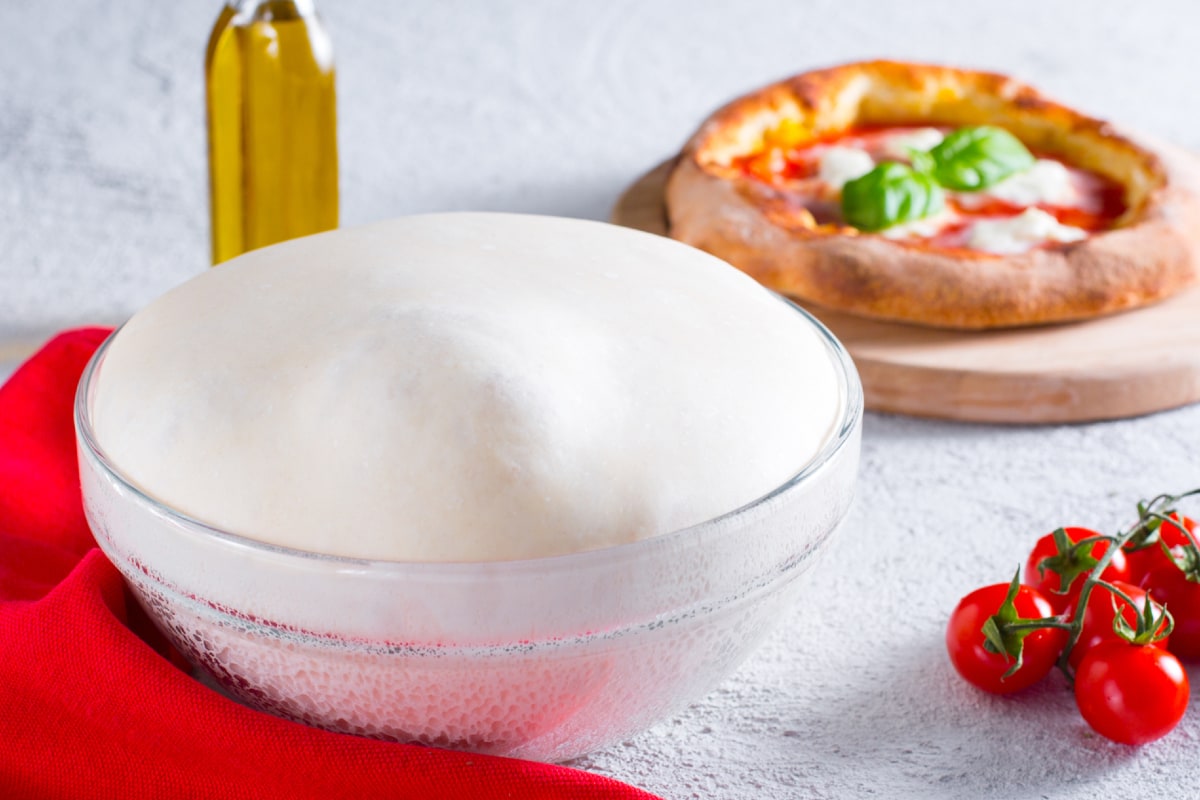Pizza with Salami and Olives
- Average
- 45 min


Fluffy interiors and a slightly chewy bite make this homemade pizza dough a real treat for families looking for comfort food with big flavor. A classic homemade pizza brings everyone together—especially with a golden, soft base that looks great filled edge-to-edge with favorites. The nice balance between a crisp edge and that classic, chewy center usually makes pizza night instantly more fun, and kids often get excited just seeing the dough puff up around toppings. Using this quick pizza dough means you’re building from a rich, fluffy foundation (yum—DELICIOUS in every bite), while the right surface, like a pizza stone, helps get that classic brown crust home cooks want. Family nights, game days, or just an easy dinner—this easy pizza recipe really works for it all. When the pizza comes out with a pretty, browned bottom and those nice bubbles around the rim, it’s easy to see why people call this the best pizza crust.
Busy weeknights feel less stressful with quick pizza dough, since it brings reliable results everyone looks forward to. Simple crust stays soft at the center, yet it holds together well—perfect for stacking up those favorite builds or just going with basic sauce and cheese. Families like having a base that’s sturdy enough for big slices (even for leftovers the next day), and you can always change things up for picky eaters or creative cooks in the house. It also doubles as a base for thin crust pizza, so if someone likes extra crispy edges, just roll it thinner and bake with a touch of olive oil for a flavor boost. Because this dough pairs easily with classic and bold toppings, families tend to reach for it over and over. Great served plain or with a twist—think dipping sauces, veggies, or artisan cheeses—its versatility makes dinner decisions simple. For busy homes that love variety, this easy pizza recipe makes pizza night a fun, relaxing tradition that always comes out good and moist, making homemade pizza truly a family favorite every single time.
You might also like:

To prepare the pizza dough, we chose to knead by hand, but if you prefer to use a mixer, follow the same steps, using the hook spatula at a medium-low speed. Start by placing both flours in a bowl 1, add the crumbled yeast 2 and a small part of the water 3. The ideal temperature of the water is 77°F (25°C).

Stir with a wooden spoon 4 and gradually add the water 5. Continue stirring all the while, and after you have poured in around half of the water, you can add the salt too 6.

Gradually add the remaining water to obtain a homogeneous mixture; you will find it is easier to knead by hand 7. Lastly, place the dough on a worktop and knead by hand 8 until smooth and homogeneous 9.

Once you have made a nice, smooth piece of dough, leave it to rest on the worktop for ten minutes or so, covered with the bowl 10. Once rested, give it a little fold: imagine the ball is divided into 4 parts, so hold each one by the tip, pull delicately and fold inwards 11. Fold the dough 12.

Turn it around 13 and shape it into a ball 14. Place the dough ball in a bowl, cover with plastic wrap 15 and leave to leaven. You may find it best to place the bowl in a switched off oven with the lights on, so that the temperature reaches 78-82°F (25-30°C), ideal for leavening, or you could leave the bowl somewhere warm. The length of time is approximate as the temperature and weather influence leavening and each dough is slightly different. On average, it should take 6 hours for the dough to double in volume.

Once the leavening time is up, the dough will be nice and plump 16; place it on the worktop and divide it into three pieces with a spatula, 9 oz (250 g) each. You may need to sprinkle a little flour onto the worktop. Now take each portion and as before, lift the dough up by the edge 18 and fold inwards.

Repeat for the other 3 edges of dough 19. Now stretch out the dough by folding it in on itself, then proceed to round the dough by turning it around by hand on the worktop, folding it away from you and then towards you repeatedly, until you make a smooth and regular ball 21.

Place each piece of dough in a previously greased pizza tray 22, cover with the lid 23 and leave to rest for another 30 minutes 24 before stretching the pizza dough out and topping it to taste!